TREATMENT
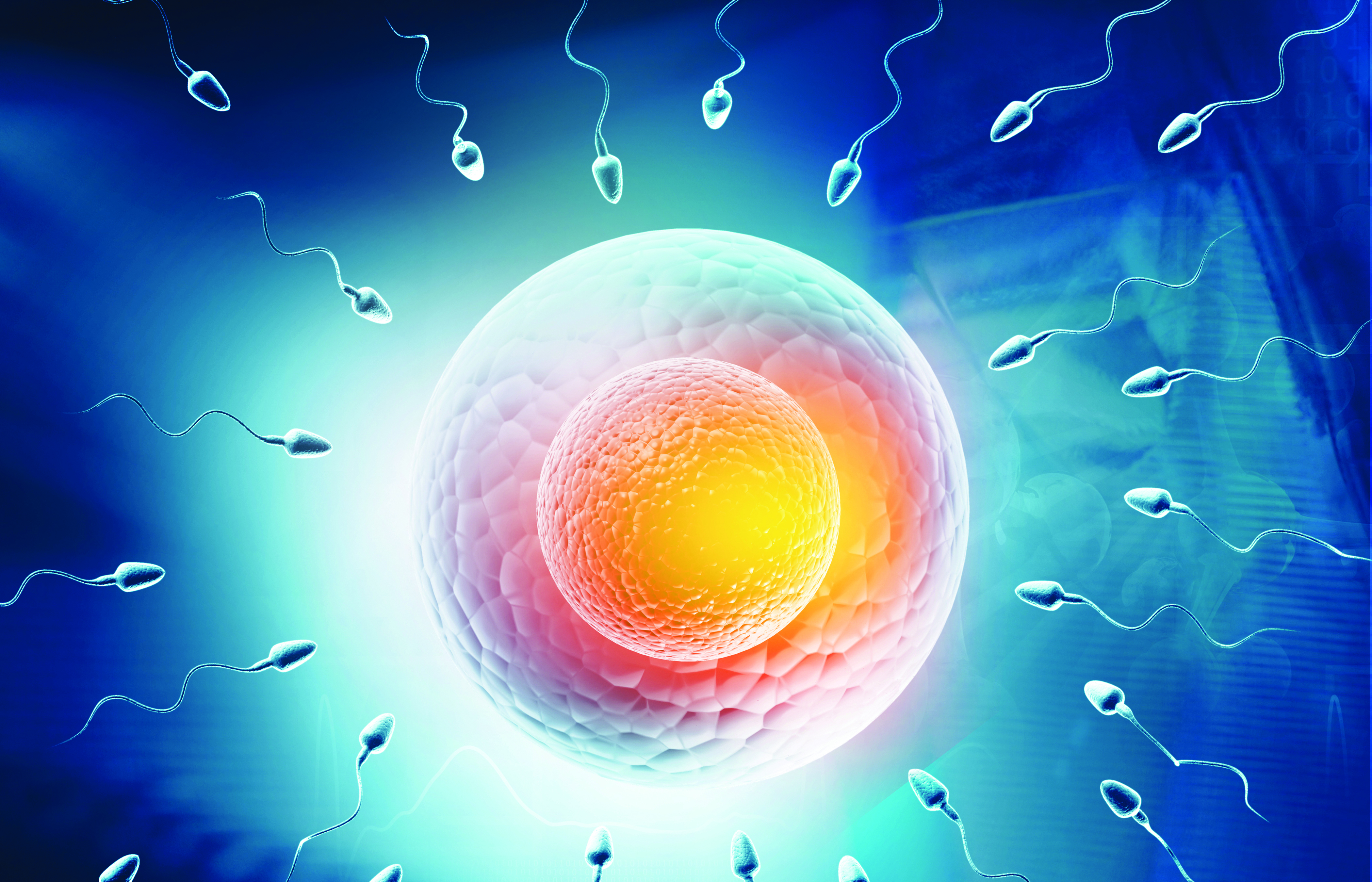
Intrauterine insemination (IUI)
Intrauterine Insemination (IUI)
Intrauterine Insemination (IUI) is a fertility treatment where sperm is directly inserted into the uterus using a small plastic catheter passed through the cervix. This procedure is typically done at or near the time of ovulation. The sperm sample is specially prepared to select only motile and healthy sperm, which are then injected into the uterus. This method bypasses the cervix, allowing a higher number of motile sperm to reach the uterus and be ready to fertilize the egg.
IUI is commonly used for couples with unexplained infertility, for men with low sperm count or ejaculation issues, and for women with ovulation problems (in which case ovulation-stimulating medications may be used). However, IUI is not suitable in cases where both fallopian tubes are blocked or if the sperm quality is extremely poor.
Steps of the IUI Procedure
- Initial Consultation (Day 1–3 of Menstrual Cycle) :
The woman sees a doctor for consultation and ultrasound. Based on her condition, the doctor selects the appropriate ovulation-stimulating medication.
- Follicle Monitoring (Day 10–14 of Menstrual Cycle) :
The woman returns for an ultrasound to check the number and size of developing follicles to predict ovulation. If the follicles are mature, the doctor will schedule the insemination and instruct the woman on how to administer an ovulation trigger shot. The male partner is advised to abstain from ejaculation for 3–5 days prior to the insemination.
- Insemination Day :
The male partner arrives at the clinic approximately 1 hour and 30 minutes before the scheduled insemination to provide a semen sample. The lab then processes the sample, selecting only healthy, motile sperm. The woman arrives, empties her bladder, and lies on a table similar to a gynecological exam. The sperm is then injected directly into the uterus.
- Post-Insemination Rest :
The woman rests for 15 minutes at the clinic and can resume normal daily activities afterward.
- Pregnancy Testing :
Around 14 days after insemination, if menstruation hasn’t occurred, a urine pregnancy test is recommended or a blood test can be performed at the clinic.
Pre-IUI Instructions
- The male partner should abstain from intercourse or ejaculation for about 3–5 days before the scheduled insemination.
- On the insemination day, the male partner must provide a semen sample at least 1.5 hours before the woman’s insemination time.
- Both partners should get adequate rest and avoid stress.
- Avoid alcohol and smoking.
- Refrain from using perfumes, colognes, sprays, cosmetics, or powders on the insemination day.
Post-IUI Care
- Normal diet can be resumed immediately after the procedure.
- You can return to work and exercise as usual.
- Intercourse is allowed after the procedure.
- Avoid medications that may affect pregnancy, such as certain acne treatments or antibiotics—consult your doctor if unsure.
- Some abdominal cramping, similar to menstrual pain but more intense, may occur for several days. This is common and does not affect the success rate. You may take paracetamol for relief.
- Normal transportation methods such as driving, boating, flying, or riding a motorcycle are permitted.
- If prescribed hormonal support medications, continue taking them as instructed and do not stop without consulting your doctor. Your period may be delayed, so come for a pregnancy test on your scheduled date.
- If menstruation does not occur within 14 days of insemination or as expected, consult the clinic for a urine pregnancy test.
- If you experience any abnormal symptoms such as vaginal bleeding or signs of allergic reactions to medication, contact the clinic immediately.
- If the pregnancy test is positive, an ultrasound should be performed as scheduled to confirm an intrauterine pregnancy, check for gestational sacs, and monitor the baby’s heartbeat.
By Assoc.Prof. Matchuporn Sukprasert
If you’d like to learn more, we’re always here to help:
Line@: @nic_clinic or https://lin.ee/Mmq6m2K
Tel: 02-007-3973 or 095-370-2483

Microfluidic Sperm Sorting
Microfluidic Sperm Sorting (MSS) is an innovative method for selecting high-quality sperm using a specially designed device equipped with microfluidic channels. These channels mimic the body’s natural sperm-selection process inside the female reproductive tract. Only healthy, highly motile sperm with intact DNA can navigate through the intricate channels to the opposite side of the device, while weaker or DNA-damaged sperm are unable to pass through.
Unlike traditional sperm preparation methods, microfluidic cell sorting selects sperm based on their natural characteristics without the need for centrifugation, which is known to increase DNA fragmentation.
As a result, MSS provides sperm that are highly motile, fast-moving, free from debris and reactive oxygen species (ROS), and exhibit significantly lower levels of DNA fragmentation compared to other preparation techniques. These high-quality sperm are ideal for use in IUI, IVF, or ICSI, helping improve fertilization outcomes, embryo quality, and overall treatment success rates.
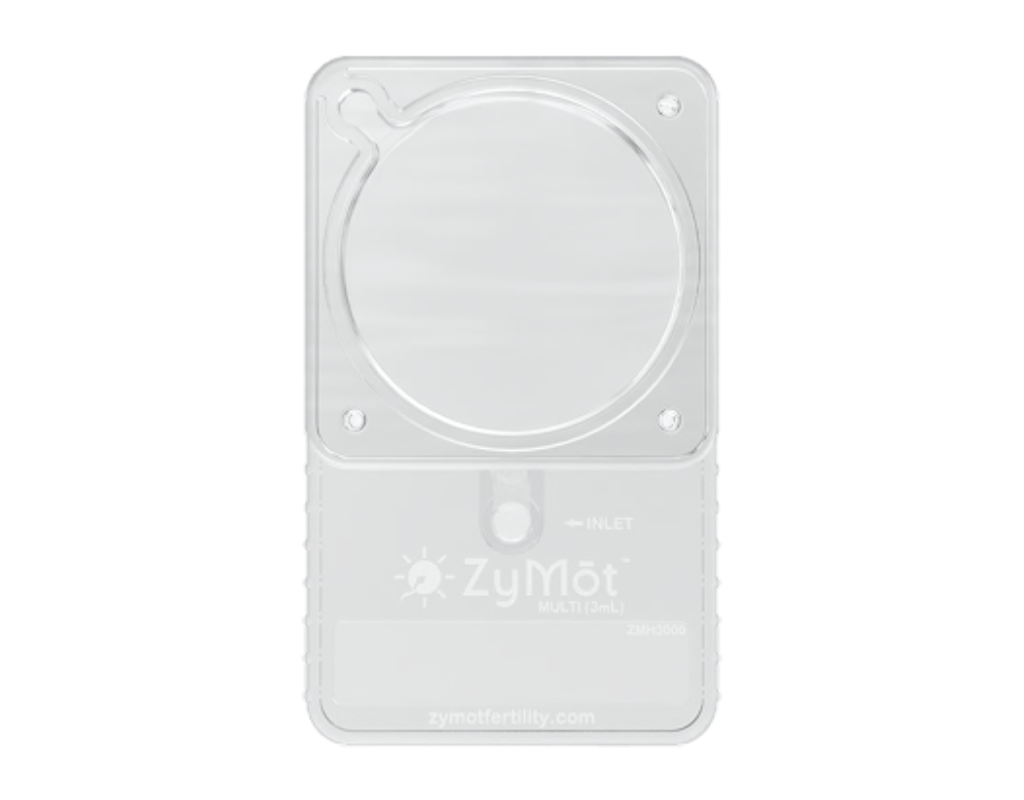
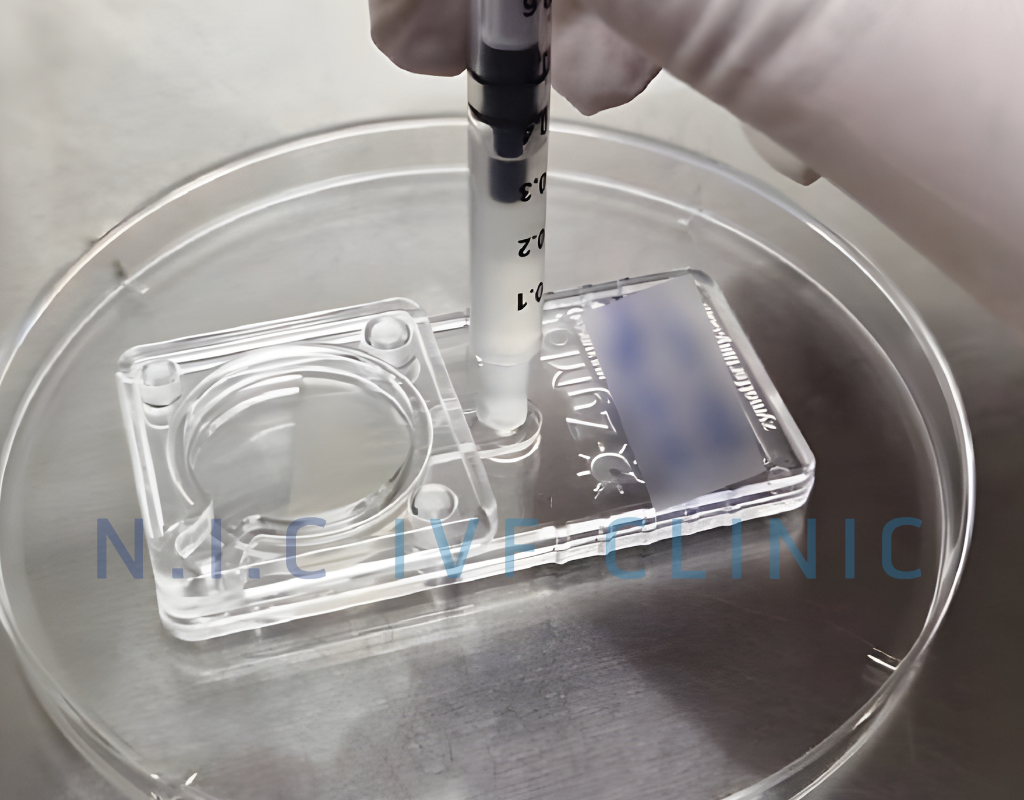
Image of Microfluidic Sperm Sorting (MSS)
Benefits of Microfluidic Sperm Sorting
- Reduces the need for centrifugation compared to traditional methods, resulting in lower sperm DNA fragmentation.
- Minimizes the generation of Reactive Oxygen Species (ROS), which can damage sperm.
- Mimics natural selection, allowing only sperm that are motile, morphologically normal, and capable of fertilization to pass through.
- Provides high-quality sperm suitable for fertilization, increasing the chances of success in IVF/ICSI.
Who Can Benefit from Microfluidic Sperm Sorting?
- Men with high sperm DNA fragmentation levels
- Men experiencing male-factor infertility (poor semen quality)
- Individuals who want to reduce ROS exposure or avoid centrifugation
- Couples who have undergone IVF/ICSI without success
- Couples looking to improve embryo quality and increase pregnancy rates
Article by
Ms. Piyarat Sophaboon, M.Sc., Embryologist
For more information, please contact us via:
LINE Official : @nic_clinic or https://lin.ee/Mmq6m2K
Tel: 02-007-3973 or 095-370-2483
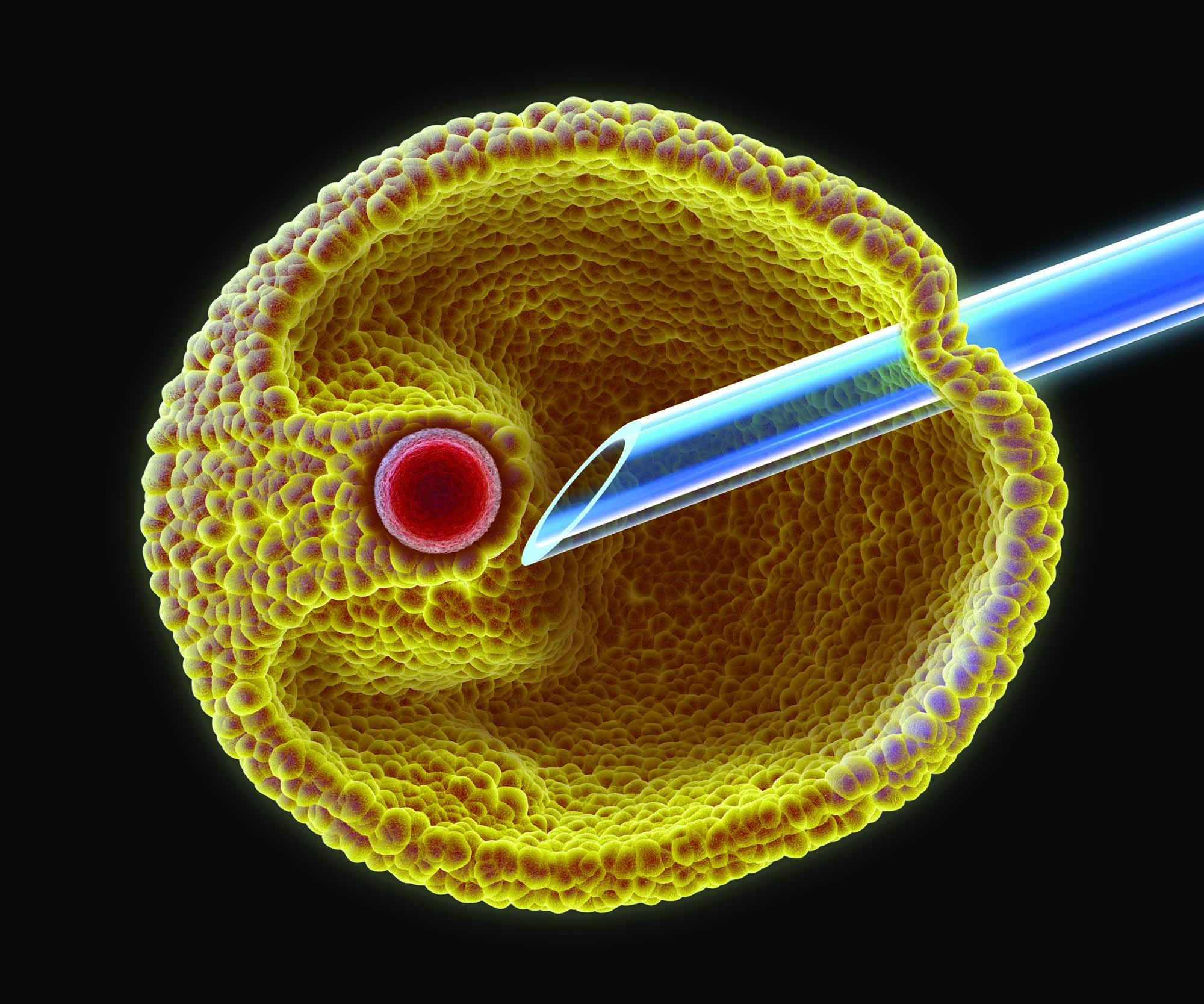
IVF / ICSI
IVF procedure
- The female patient visits the physician within the first 1–3 days of menstrual cycle for an ultrasound and hormonal evaluation. Based on the results, the physician will prescribe ovarian stimulation medications tailored to the individual.
- After receiving the ovulation stimulation injections, the woman should see the doctor about 2-3 times for an ultrasound, depending on the growth rate of the eggs. When the eggs have reached their full size (larger than 17-18 millimeters), the doctor will order ovulation induction injection and advise the man to ejaculate for the last time 3-5 days before the scheduled egg retrieval date.
- On the day of egg retrieval, the male partner should accompany the female partner to provide a semen sample. The egg retrieval procedure will be performed under intravenous sedation.
- Fertilization is usually performed using Intracytoplasmic Sperm Injection (ICSI), in which a single sperm is injected directly into an egg. The resulting embryos are cultured until they reach the blastocyst stage.
- In the case of a fresh transfer, the embryo is transferred to the uterus 3–5 days after egg retrieval. If the physician recommends freezing the embryos for a later cycle, the female patient will be asked to return on days 1–2 of next menstrual cycle for ultrasound and medication to prepare the uterine lining.
- Pregnancy Testing: A blood test for pregnancy hormones (β-hCG) will be conducted 7–10 days after embryo transfer.
Egg Retrieval Procedure
Egg retrieval is one of the critical steps in the IVF process and is performed approximately 34–36 hours after the ovulation trigger injection. The eggs are collected transvaginal using a fine needle attached to an ultrasound probe, allowing for both identification and aspiration of the follicles. The procedure is performed under intravenous sedation and typically takes less than 30 minutes. The aspirated follicular fluid is then examined by an embryologist to assess egg quality and select suitable ones for ICSI.
Pre-Egg Retrieval Instructions
- Confirm and adhere strictly to the date and time for the ovulation trigger injection as advised by the physician.
- Refrain from eating or drinking for at least 8 hours prior to the scheduled egg retrieval time.
- Arrive at N.I.C IVF Clinic at least 1 hour before the procedure for preparation.
- Cleanse body and genital area before the procedure.
- The male partner should be prepared to provide a semen sample around the same time as egg retrieval.
- Abstain from sexual intercourse, as it may damage the ovaries.
- Avoid scented products, including perfume, sprays, cosmetics, or powder on the day of egg retrieval.
- Remove any nail polish before the procedure.
- Do not wear jewelry or bring valuables to the clinic.
- Do not wear jewelry or bring valuables to the clinic.
Post-Egg Retrieval Care Instructions
- Upon waking from sedation, mild nausea, abdominal pain, or light vaginal bleeding may occur.
- Rest in the recovery room for approximately 1–2 hours before going home.
- Pain relief medication can be taken as prescribed if discomfort arises.
- Strictly follow the doctor’s instructions regarding all medications (injections, oral, or suppositories).
- Prioritize rest and maintain a positive emotional state.
- Do not drive yourself home it is essential to be accompanied by a relative or companion.
- Seek immediate medical attention if you experience severe bloating, abdominal discomfort, difficulty breathing, significant abdominal enlargement, or abnormal vaginal bleeding.
By Assoc.Prof. Matchuporn Sukprasert
If you’d like to learn more, we’re always here to help:
Line@: @nic_clinic or https://lin.ee/Mmq6m2K
Tel: 02-007-3973 or 095-370-2483

PGT-A / NGS
The technology of preimplantation genetic testing has advanced significantly in recent years. Originally developed in 1980, this testing was based on the use of PCR (Polymerase Chain Reaction) to amplify genetic material, primarily focusing on sex-linked chromosomal disorders. Due to technical limitations at the time, the testing could only determine the sex of the embryo and not identify specific gene or chromosomal abnormalities. As a result, embryos were selected based on sex to avoid severe genetic diseases, potentially discarding embryos of the opposite sex that may have been healthy or only mild carriers, without knowing their actual genetic condition. This limitation underscored the need to develop more specific techniques capable of identifying both the sex and the presence of genetic or chromosomal abnormalities. Over time, advancements have been made in both genetic amplification and diagnostic accuracy. Techniques such as Comparative Genomic Hybridization (CGH), Next Generation Sequencing (NGS), real-time PCR, and Karyomapping have emerged. Currently, the most widely used technology for preimplantation genetic testing prior to embryo transfer into the uterus is Next Generation Sequencing (NGS).
Next Generation Sequencing (NGS) is a modern base sequencing technology that enables rapid and comprehensive sequencing. It allows for the analysis of all 24 chromosomes of an embryo in a single test, as illustrated in Figures 1 and 2. This method offers a high accuracy rate of up to 95-97%. Since current testing is performed at the blastocyst stage, where a higher number of cells is available for analysis, the precision of the test is significantly improved. In addition to detecting full chromosomal aneuploidy (gain or loss of entire chromosomes), NGS can also identify segmental aneuploidy, which refers to partial chromosomal abnormalities. Older techniques such as FISH or CGH are not capable of detecting these segmental changes. Moreover, NGS has been shown to increase pregnancy success rates and reduce miscarriage rates by up to 50%, making it a crucial advancement in the field of reproductive genetics.
Picture 1 demonstrates female embryo with normal chromosomes using NGS method: 46 XX.
Picture 2 demonstrates male embryo with normal chromosome using NGS method: 46 XY.

By Assoc.Prof. Matchuporn Sukprasert
If you’d like to learn more, we’re always here to help:
Line@: @nic_clinic or https://lin.ee/Mmq6m2K
Tel: 02-007-3973 or 095-370-2483

EGG FREEZING
Oocyte Freezing
In modern Thai society, there is a growing trend of marrying at an older age. As is well known, age has a direct impact on the quality of a woman’s eggs. As illustrated in Figure 1, the most fertile age range is between 25 - 29 years. After this period, fertility gradually declines, with a significant drop occurring after the age of 35. This decline in fertility is the basis for the recommendation to freeze eggs before the age of 35. Egg freezing helps to preserve the age and quality of the eggs at the time of retrieval, preventing further decline as the woman ages.
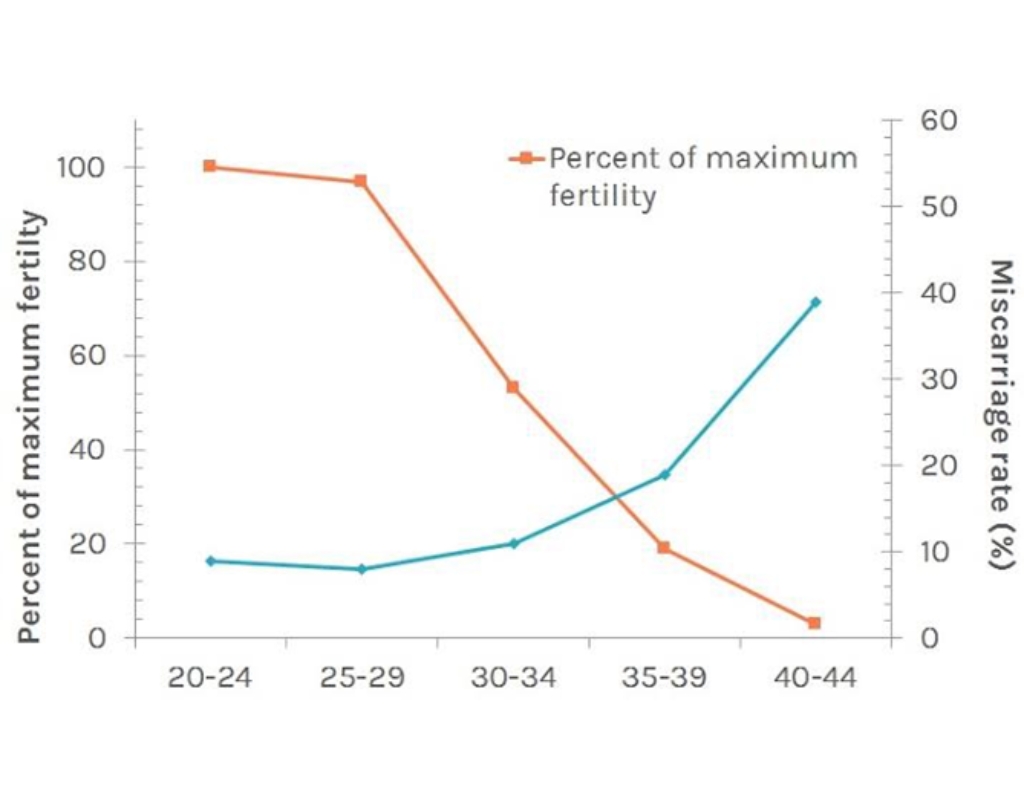
Picture 1 demonstrates the relationship between ages and reproductive percentile.
Additionally, the eggs in women who are more than 35 years old tend to have embryos with abnormal chromosomes when fertilize with sperm. This fact is shown in picture 2.

Picture 2 demonstrates the relationship between age of women and percentile of having Down syndrome babies.
Moreover, a woman’s egg production is determined before birth with the highest number of eggs present at around seven months of gestation. From that point onward, the number of eggs gradually decreases over time. This natural decline with age is the reason why it is advisable to freeze eggs while still young, as illustrated in Figure 3.

Oocyte Freezing Process
The process of oocyte freezing involves stimulating the ovaries with hormone injections, similar to the protocol used in in vitro fertilization (IVF), in order to retrieve a sufficient number of eggs. Once the eggs have matured to the appropriate size, they are collected from the body and frozen before fertilization with sperm.
The freezing technique used is the same as that used for embryo freezing, with the primary difference being the type of cry protective agents used. However, frozen eggs tend to be less robust than frozen embryos. When thawed for fertilization, approximately 80% of the frozen eggs are expected to survive the process.
Indications for Oocyte Freezing
- Elective egg freezing for the purpose of future fertilization with the legally married partner’s sperm.
- Medical egg freezing in cases where the woman is diagnosed with certain cancers and will undergo treatments such as chemotherapy, radiation therapy, or surgery that may impair ovarian function. Egg freezing may also be considered for other medical conditions where treatment is expected to negatively affect the quality or quantity of eggs in the future.
By Assoc.Prof. Matchuporn Sukprasert
If you’d like to learn more, we’re always here to help:
Line@: @nic_clinic or https://lin.ee/Mmq6m2K
Tel: 02-007-3973 or 095-370-2483
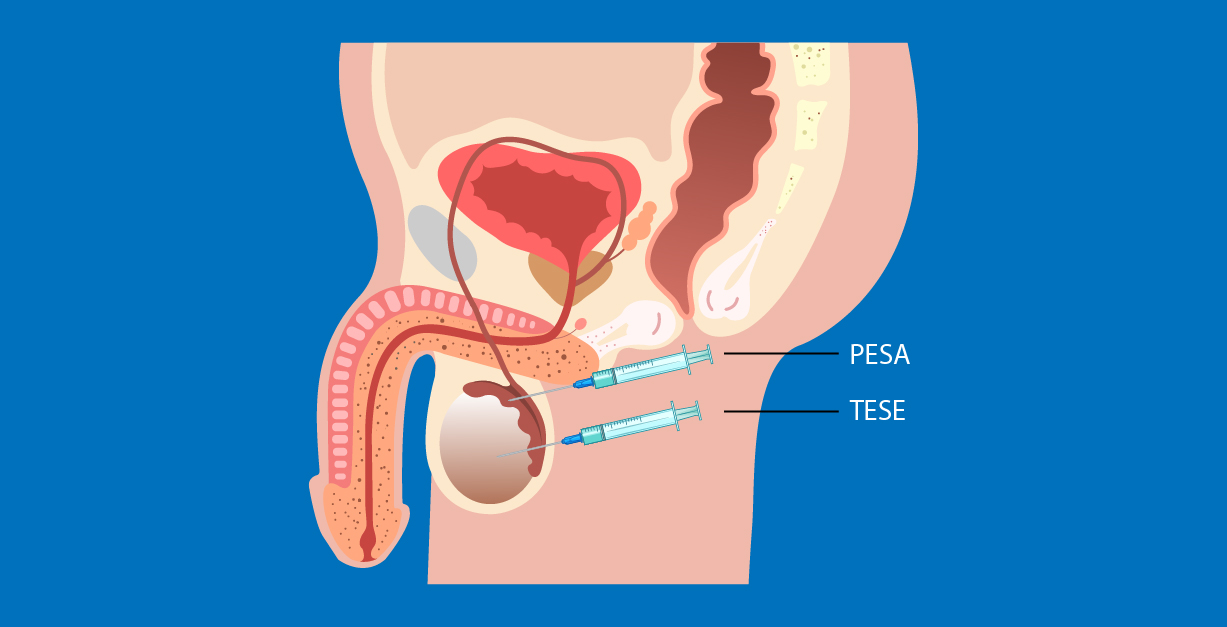
Testicular Sperm Retrieval: PESA/TESE Techniques
Testicular sperm retrieval is indicated in cases where the male partner is diagnosed with specific reproductive disorders. The procedure may be considered in the following situations:
- The semen sample contains no sperm (azoospermia) due to obstruction of the spermatic ducts or congenital absence of the vas deferens.
- Natural ejaculation is not possible.
- The patient experiences ejaculatory dysfunction due to spinal cord injury or other health-related issues, or when ejaculated sperm are all non-viable.
- The patient has undergone vasectomy and does not wish to undergo vasectomy reversal.
In the past, men diagnosed with such conditions were unable to have biological children unless donor sperm was used. However, with advances in medical technology, it is now possible for men with obstructive or non-obstructive azoospermia where spermatogenesis still occurs in the testes to father their own children. This is made possible through surgical sperm retrieval techniques that allow sperm to be obtained directly from the site of production the testis. This method increases the chances of retrieving viable sperm suitable for use in assisted reproductive technologies, such as intracytoplasmic sperm injection (ICSI).
Surgical sperm retrieval can be performed as long as the testes are capable of producing sperm. The specific technique chosen is based on clinical evaluation and at the discretion of the physician. The two primary methods of testicular sperm retrieval are
- PESA (Percutaneous Epididymal Sperm Aspiration): A minimally invasive procedure in which a fine needle is used to aspirate sperm from the epididymis.
- TESE (Testicular Sperm Extraction): A minor surgical procedure in which a small sample of testicular tissue is removed for examination and extraction of sperm.
Each method has its indications depending on the underlying cause of male infertility, and a reproductive specialist will determine the most appropriate approach based on individual diagnosis and clinical context.
PESA (Percutaneous Epididymal Sperm Aspiration)
PESA (Percutaneous Epididymal Sperm Aspiration) is a minimally invasive technique for sperm retrieval that involves the use of a fine needle, approximately 2 millimeters in diameter, to aspirate fluid from the epididymis. The epididymis, located at the upper part of the testicle, is where sperm cells are collected and stored after being produced in the seminiferous tubules.
During the procedure, a needle is carefully inserted into the epididymal region to aspirate fluid containing spermatozoa. The retrieved fluid is then examined under a microscope to identify the presence of sperm and assess sperm quality for potential use in assisted reproductive techniques.
The PESA procedure typically takes approximately 10 to 20 minutes to complete. It can be performed under local anesthesia or intravenous sedation, depending on patient preference and medical evaluation. After the procedure, the patient is usually observed for about one hour and may return home the same day without the need for extended hospitalization.
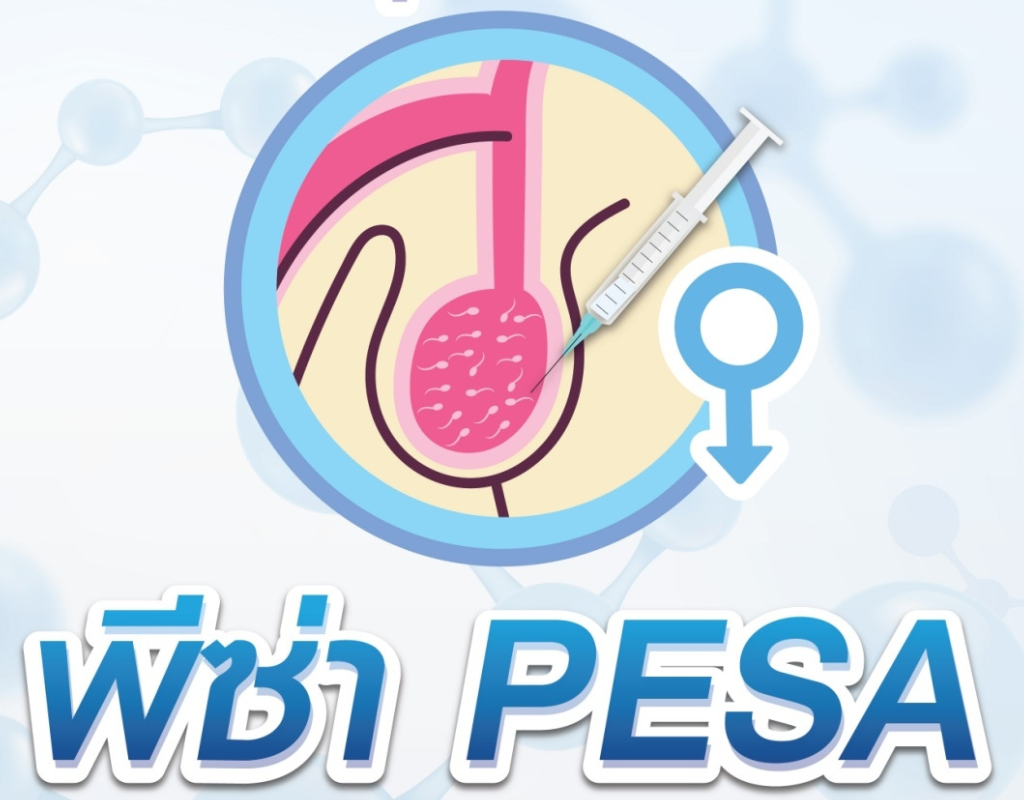
TESE (Testicular Sperm Extraction)
In cases where no spermatozoa are found through aspiration from the main epididymal ducts, the TESE (Testicular Sperm Extraction) procedure may be performed. This technique involves making a small incision, approximately 1–2 millimeters in size, in the scrotal skin to access the testicular tissue directly.
A small biopsy of testicular tissue is surgically extracted from areas likely to contain active spermatogenesis. The tissue is then processed and examined microscopically to identify the presence of viable sperm for use in assisted reproductive techniques such as ICSI (Intracytoplasmic Sperm Injection).
TESE requires intravenous sedation or general anesthesia. Postoperative discomfort is generally mild and can be managed with oral analgesics. Most patients report a significant reduction in pain within three days following the procedure.
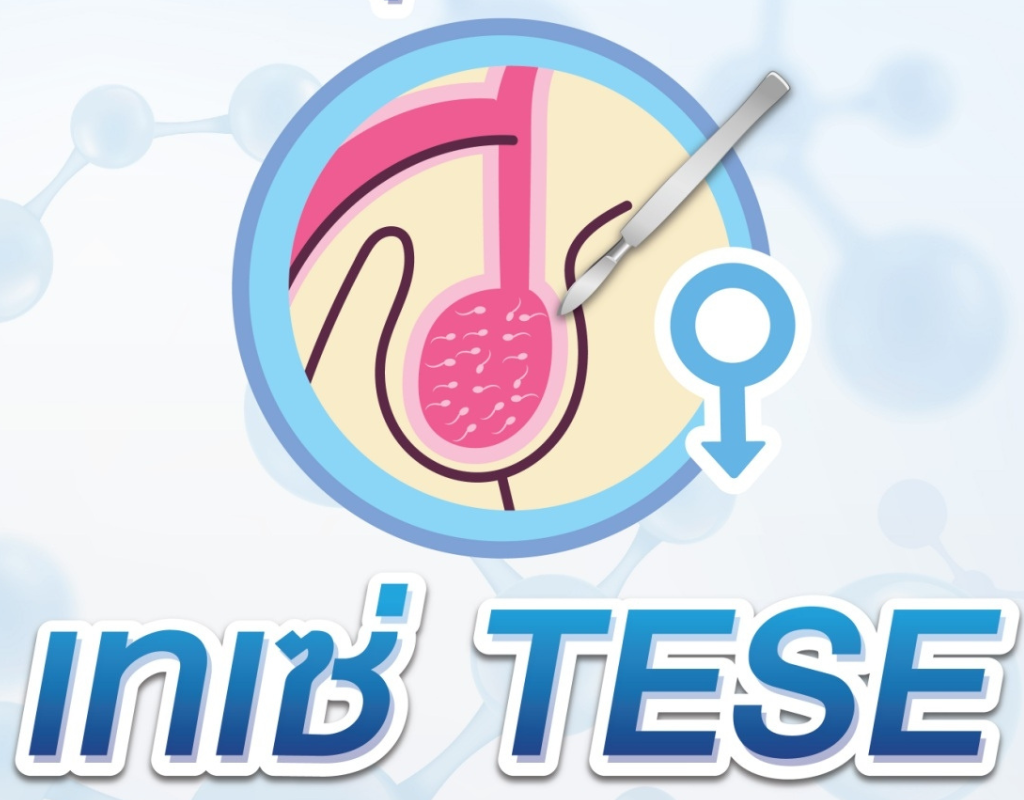
Guidelines before the procedure
The doctor will require a blood test to evaluate overall health and to prepare for the surgery. The patient must refrain from eating and drinking 6 – 8 hours before the procedure.
Preoperative Instructions for Testicular Sperm Retrieval
Prior to undergoing testicular sperm retrieval, patients are required to undergo blood testing to assess surgical fitness. In addition, patients must fast abstaining from both food and water for at least 6 to 8 hours before the procedure, as per standard preoperative protocols.
Postoperative Care Instructions
- Keep the wound dry. Avoid getting the incision wet and refrain from swimming or soaking in a bathtub until the wound is completely healed and dry.
- Hygiene after urination. Gently pat the area dry after urination to maintain a clean and dry wound.
- Medications. Take prescribed analgesics and antibiotics as directed by the physician to reduce pain, swelling, and the risk of infection.
- Physical activity. Refrain from strenuous physical activity and exercise for at least two weeks to prevent testicular pain or swelling.
- Sexual activity. Avoid sexual intercourse until the wound has completely healed.
Potential Complications
Although complications are rare, occurring in fewer than 2% of cases, some patients may experience postoperative side effects, including:
- Infection
- Hematoma (accumulation of blood within the testicle)
- Postoperative pain at the surgical site
These complications are generally mild and can be effectively managed with appropriate medical treatment.
Success Rates of Testicular Sperm Retrieval
Testicular sperm retrieval procedures have demonstrated high success rates, particularly in patients with obstructive azoospermia. The outcome depends on the underlying cause of infertility, the patient’s overall health, and the presence of viable sperm within the testicular tissue.
Safety of PESA/TESE Procedures
PESA and TESE are considered safe and minimally invasive procedures. They offer hope and additional treatment options for couples experiencing male factor infertility. Current data indicate that these procedures do not increase the risk of congenital anomalies or developmental disorders in offspring when compared to the general population.
By Assoc.Prof. Matchuporn Sukprasert
If you’d like to learn more, we’re always here to help:
Line@: @nic_clinic or https://lin.ee/Mmq6m2K
Tel: 02-007-3973 or 095-370-2483

Hysteroscopy
Hysteroscopic Surgery in Uterine Cavity for Infertility Patients
When some patients did not have successful treatments even though their embryo chromosomes have been examined to be normal, or there were no obvious problems after an evaluation, we can assume that this group of patients may have embryo implantation problems. Usually, the patients will be recommended to be examined for possible causes in the uterine cavity whether they have any symptoms or not. In general, the symptoms that can cause pathology of the uterine cavity are abnormal heavy menstrual bleeding, irregular menstrual cycle, or menstrual pain.
Nowadays, the well-known examination for the pathology of the uterine cavity is Hysteroscopy, which can be used for diagnosis and also for treatments.
Generally, there are two types of the method.
1. Diagnostic Hysteroscopy
It is a minor surgery that can be done in the outpatient department. A small hysteroscope with a size of around 2.9 – 4 millimeters will be inserted inside the uterine cavity to perform a pathology examination. These are the types of uterine cavities that usually can be found:
Normal endometrium is a normal uterine cavity with no fibroid or polyps that might be an obstacle to embryo implantation. The surface is smooth with the size shown in Picture 1.

Picture 1 demonstrates a normal uterine cavity from performing diagnostic hysteroscopy.
Endometrial polyp is a uterine polyp that is commonly found in an abnormal uterine cavity and might have no symptoms. With the small size, the polyp could come out with menstrual bleeding, and it is noncancerous. After treatment, it could occur again. However, endometrial polyp surgery needs to be done because it can interfere with embryo implantation as shown in Picture 2.

Picture 2 demonstrates endometrial polyp inside the uterine cavity.
Submucous myoma is a fibroid that usually can be found in reproductive-age women. The one that develops in the uterine cavity can interfere with pregnancy. As shown in Picture 3, this can create no symptoms at all or can cause excessive heavy menstrual bleeding, and it will lead to anemia. This kind of fibroid mostly will not be cancerous but need to be removed before pregnancy.

Picture 3 demonstrates fibroid that grows inside the uterine cavity.
Septate uterus is a deformity that happens before birth. The inner portion of the uterine cavity was divided by a wall of tissue, and the embryo cannot be implanted, or there is a high risk of having a miscarriage later. This could be treated with surgery to remove the wall of tissue inside the uterine cavity as shown in Picture 4.

Picture 4 demonstrates the surgery to remove a wall of tissue inside the uterine cavity.
Uterine synechiae is a condition that usually happens after dilatation and curettage or after having a severe infection in the uterine cavity that can cause adhesion. Therefore, surgery needs to be done to remove the adhesion before pregnancy.

Picture 5 demonstrates adhesion band inside the uterine cavity.
2. Hysteroscopic surgery
The procedure is done in the surgery room. Usually, the size of the hysteroscope will be bigger than the one used during diagnosis, and the cervix needs to be enlarged before inserting the camera. These are additional tools such as electric loops, small scissors, and morcellator to help remove polyps, fibroids, adhesions, or a wall of tissue inside the uterine cavity. So, the patient may be given medication to help her relax and to block the pain during the surgery.
The appropriate time to schedule for diagnostic hysteroscopy and surgery is after the menstrual period until before ovulation. During this time, the uterine cavity is not thick and not swollen from ovulation’s discharge, so we can clearly see the pathology.
Preparation for uterine cavity hysteroscopy
1. Diagnostic Hysteroscopy
This procedure can be done an outpatient department (OPD), and anesthesia is not required. So, the patient does not have to prepare many things in particular. However, the procedure should not be performed right after having a meal to avoid vomiting during the hysteroscopy. So, the patient should avoid having food 2 – 3 hours before the procedure. Make sure to use the toilet and may also take some painkiller medicines an hour before the procedure.
Hysteroscopic surgery
- Refrain from eating and drinking 6-8 hours before the surgery.
- Medicine will be inserted into the vagina 6-8 hours before the surgery. This is necessary because it will open the cervix and help the process to be smoother. However, there might be some side effects such as having a low-grade fever, stomach pain, or having blood show from the vagina due to the medicine that causes contraction. These symptoms will be gone after the surgery.
Post-surgery Instructions
- Complete the course of antibiotics.
- Avoid having sexual intercourse, swimming, and heavy exercise for the first 2 weeks after the surgery.
- Eat healthy meals. There is no specific restriction.
- There might be some blood from the vagina within the first week after the surgery but it should not have any smell. Stomach cramps that are similar to menstrual cramps might occur, but they are not harmful. Should there be any serious symptoms, please contact your doctor.
By Doctor Warawun Lupthalug
If you’d like to learn more, we’re always here to help:
Line@: @nic_clinic or https://lin.ee/Mmq6m2K
Tel: 02-007-3973 or 095-370-2483

Specialized Techniques
Our clinic offers a range of advanced technologies specifically designed to improve success rates and treatment outcomes in assisted reproductive procedures. These specialized techniques include:
1. Next Generation Sequencing (NGS)
NGS is a cutting-edge method for comprehensive chromosomal screening of embryos. Unlike older techniques such as Fluorescence In Situ Hybridization (FISH), which can detect only 5 chromosome pairs, NGS can analyze all 24 chromosomes (23 pairs + sex chromosomes). This advanced technology increases the accuracy of embryo selection, reduces miscarriage rates, and significantly improves the chances of achieving a successful pregnancy by ensuring that only chromosomally normal embryos are transferred.
2. Macs® Art Annexin V system
This technology enables the removal of apoptotic (non-viable or dying) sperm prior to fertilization. By filtering out non-viable sperm cells, the remaining sperm used in fertilization have higher viability and genetic integrity, which has been shown to increase fertilization and pregnancy rates compared to conventional sperm preparation methods.
3. Halosperm® G2
Halosperm G2 is a diagnostic assay used to detect sperm DNA fragmentation. This method enables embryologists to assess and select sperm with intact DNA for fertilization. Improved sperm DNA integrity has been linked to higher fertilization rates, better embryo development, and enhanced implantation potential.
4. Endometrial Receptivity Test (ERA® Test)
ERA is a personalized diagnostic tool that determines the optimal implantation window for each individual woman. Since the timing of endometrial receptivity varies from person to person, this test provides a customized recommendation for the precise timing of embryo transfer. Studies show that ERA-guided transfers improve implantation and pregnancy rates in women with repeated implantation failure or unexplained infertility.
5. Oosight® Spindle view Imaging System
Oosight is a high-resolution polarized light microscope that allows visualization of the meiotic spindle in oocytes during the ICSI (Intracytoplasmic Sperm Injection) procedure. Observing the spindle helps embryologists avoid structural damage to the egg during injection, leading to higher fertilization rates and better embryo development when compared to conventional ICSI performed without spindle imaging.
6. Preimplantation Genetic Testing for Monogenic Disease (PGT-M)
PGT-M is a specialized genetic screening used to identify single-gene disorders in embryos, particularly in couples with known hereditary risks. Common diseases include:
PGT-M is a specialized genetic screening used to identify single-gene disorders in embryos, particularly in couples with known hereditary risks. Common diseases include:
- Thalassemia
- Hemophilia
- Huntington’s disease
- Duchenne Muscular Dystrophy
- And other inheritable monogenic conditions
This testing requires expert knowledge in reproductive genetics. Our team includes Assistant Professor Dr. Matchuporn Sukprasert, Thailand’s first specialist in this field trained at Weill Cornell Medical College, Cornell University, New York, USA. Her expertise ensures precise diagnosis, appropriate counseling, and optimal embryo selection for families at risk of genetic disorders.
If you’d like to learn more, we’re always here to help:
Line@: @nic_clinic or https://lin.ee/Mmq6m2K
Tel: 02-007-3973 or 095-370-2483
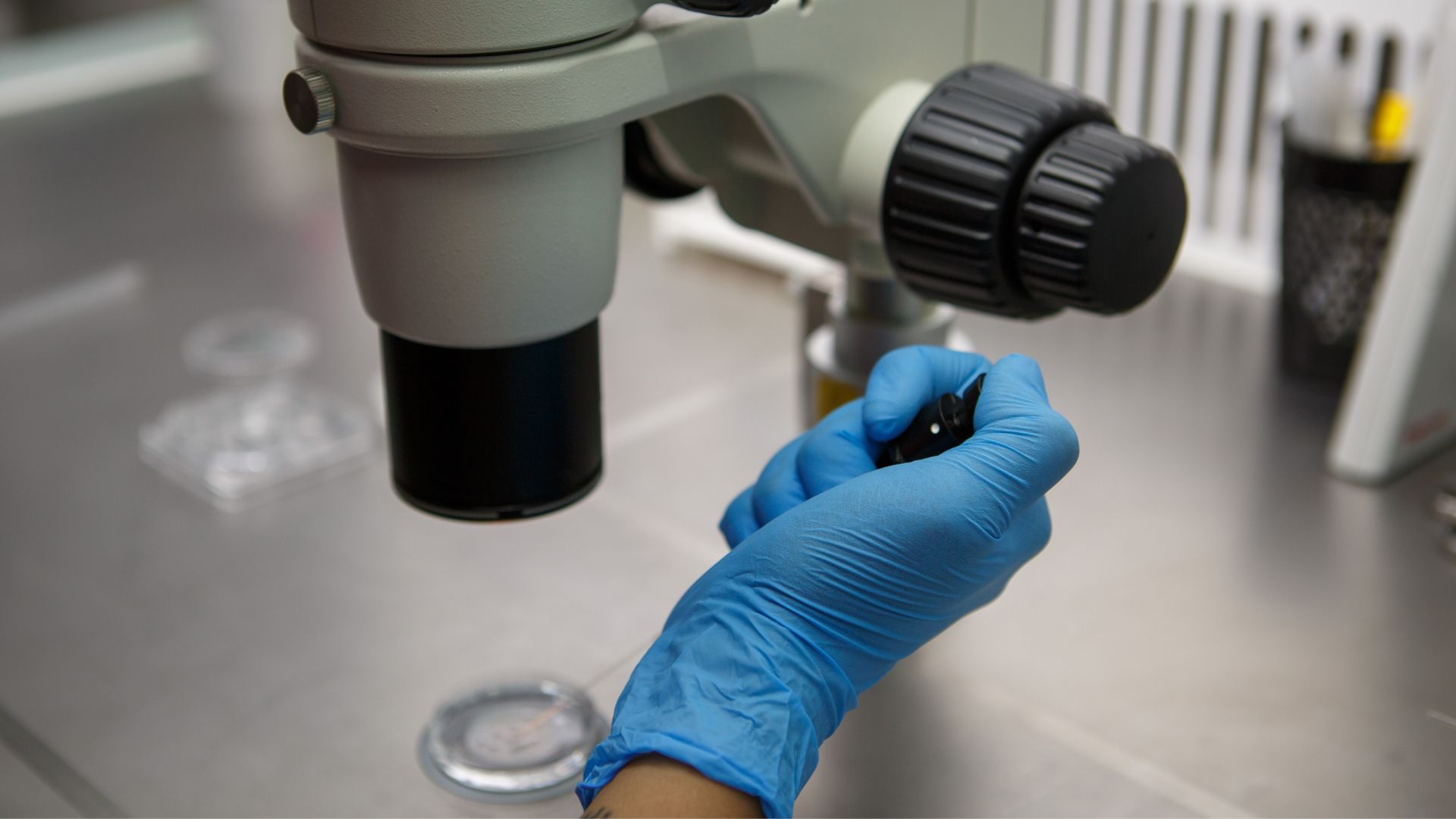
Embryo Transfer (ET)
Embryo Transfer (ET)
Embryo transfer into the uterine cavity is the final step in assisted reproductive technology. Although this process is often the most anxiety inducing for patients, in reality, it is similar to a routine gynecological pelvic exam that women undergo annually only even more gentle. The procedure is painless in order to avoid stimulating uterine muscle contractions, thus sedation or pain relief medication is generally unnecessary.
The embryo transfer involves inserting a small, soft plastic catheter into the uterine cavity at the appropriate location, followed by the placement of the embryo through the catheter. This process is typically guided by abdominal ultrasound to determine the optimal position for embryo placement, maximizing the chances of pregnancy.
Patient Instructions before Embryo Transfer (ET)
- Please arrive at the N.I.C IVF Clinic 1 hour prior to your scheduled time for preparation
- Shower and maintain personal hygiene.
- Fasting is not required; you may eat and drink as usual.
- Avoid using scented products such as perfumes, sprays, cosmetics, or body powders on the day of embryo transfer.
- Please do not wear any jewelry or accessory or bring valuables on the embryo transfer date.
Note :
***If your embryo transfer appointment is BEFORE 12.00 PM, DO NOT NEED TO INSERT VAGINAL MEDICATION that morning.
***If your embryo transfer appointment is AFTER 12.00 PM, PLEASE INSERT VAGINAL MEDICATION as usual.
Patient Instructions after Embryo Transfer (ET)
- Remain lying down for at least 30 minutes immediately after the procedure.
- You may resume eating normally, preferably light, easily digestible, and hygienic food.
- You may go home after resting for at least one hour post-procedure.
- Strictly follow the doctor's prescription for any injectable, vaginal, or oral medications.
- After embryo transfer
- Avoid sexual intercourse for approximately 14 days or until the scheduled blood test.
- Do not douche the vaginal area.
- Do not lift heavy objects. You may use stairs only when necessary.
- Refrain from intense physical activities such as heavy workouts, hot yoga, or sauna.
- Avoid strenuous work or highly stressful tasks during this period.
- Prevent constipation or diarrhea by managing your diet carefully.
- Avoid crowded places to reduce the risk of infection (e.g., colds, rubella) from others.
- Avoid swimming in shared pools to prevent potential infections.
- Get adequate rest. You may lie on your back or side (left or right). It is not necessary to stay in bed all day, but avoid sudden or vigorous movements.
- Do not drive yourself to avoid sudden jolts or impacts.
- Return for a blood test to check for pregnancy approximately 7–14 days after embryo transfer.
- If you experience any abnormal symptoms such as bleeding, lower abdominal pain, or unusual vaginal discharge, contact your doctor immediately.
By Assoc.Prof. Matchuporn Sukprasert
If you’d like to learn more, we’re always here to help:
Line@: @nic_clinic or https://lin.ee/Mmq6m2K
Tel: 02-007-3973 or 095-370-2483
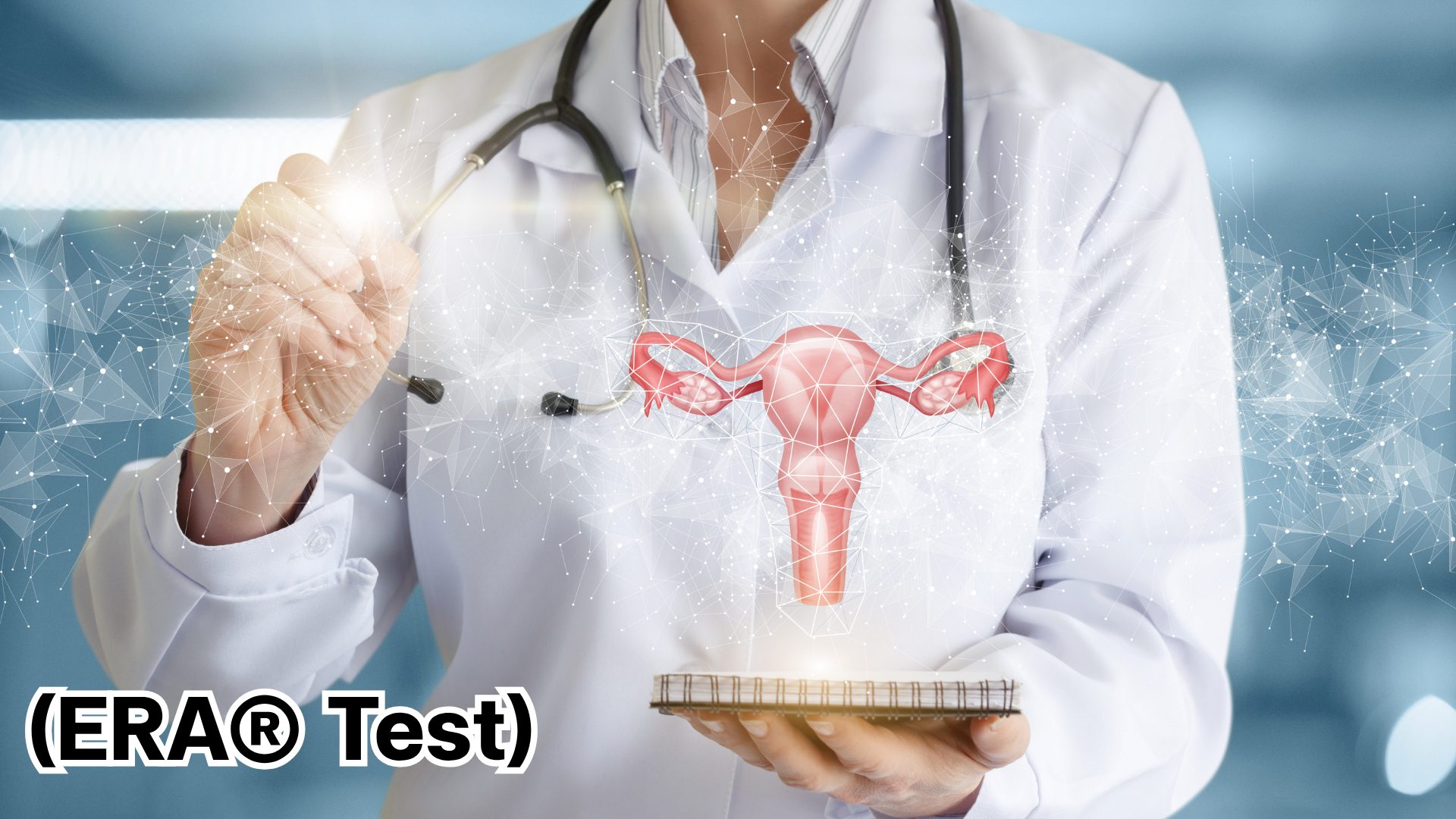
Endometrial Receptivity Test (ERA® Test)
ERA® Test is a technology that allows calculating the most suitable time of the endometrium for embryo implantation. Normally, this time period is different for each person. This technique can be used to find the best time for that specific couple. Makes the embryo transfer have a higher success rate. and have a better pregnancy rate
ERA® Test is an examination using a Micro Array. Analyze the appropriate time for embryo implantation from the endometrium. They will be able to know at what stage of the menstrual cycle the embryo should be implanted.
Who is the ERA® Test suitable for?
- Patients who have had good quality embryos transferred multiple times but have not been successful in getting pregnant.
- Patients who have had repeated miscarriages.
- Patients who have a history of difficult endometrial preparation.
- Patients with relatively few embryos.
How does ERA® Test test?
- The doctor prepares the endometrium by using preparation medication. and follow up with ultrasound to assess the thickness of the endometrium.
- The doctor schedules an appointment to collect an endometrial tissue sample. and analyze and calculate the appropriate date.
- Wait for the analysis results for 1 month.
- Embryo transfer is performed on the appropriate day. After knowing the results of the ERA® Test
Benefits of doing the ERA® Test
ERA® Test technology calculates the optimal timing of the endometrium to implant an embryo at the most appropriate time. to have a higher pregnancy rate
By Assoc.Prof. Matchuporn Sukprasert
.
If you’d like to learn more, we’re always here to help:
Line@: @nic_clinic or https://lin.ee/Mmq6m2K
Tel: 02-007-3973 or 095-370-2483